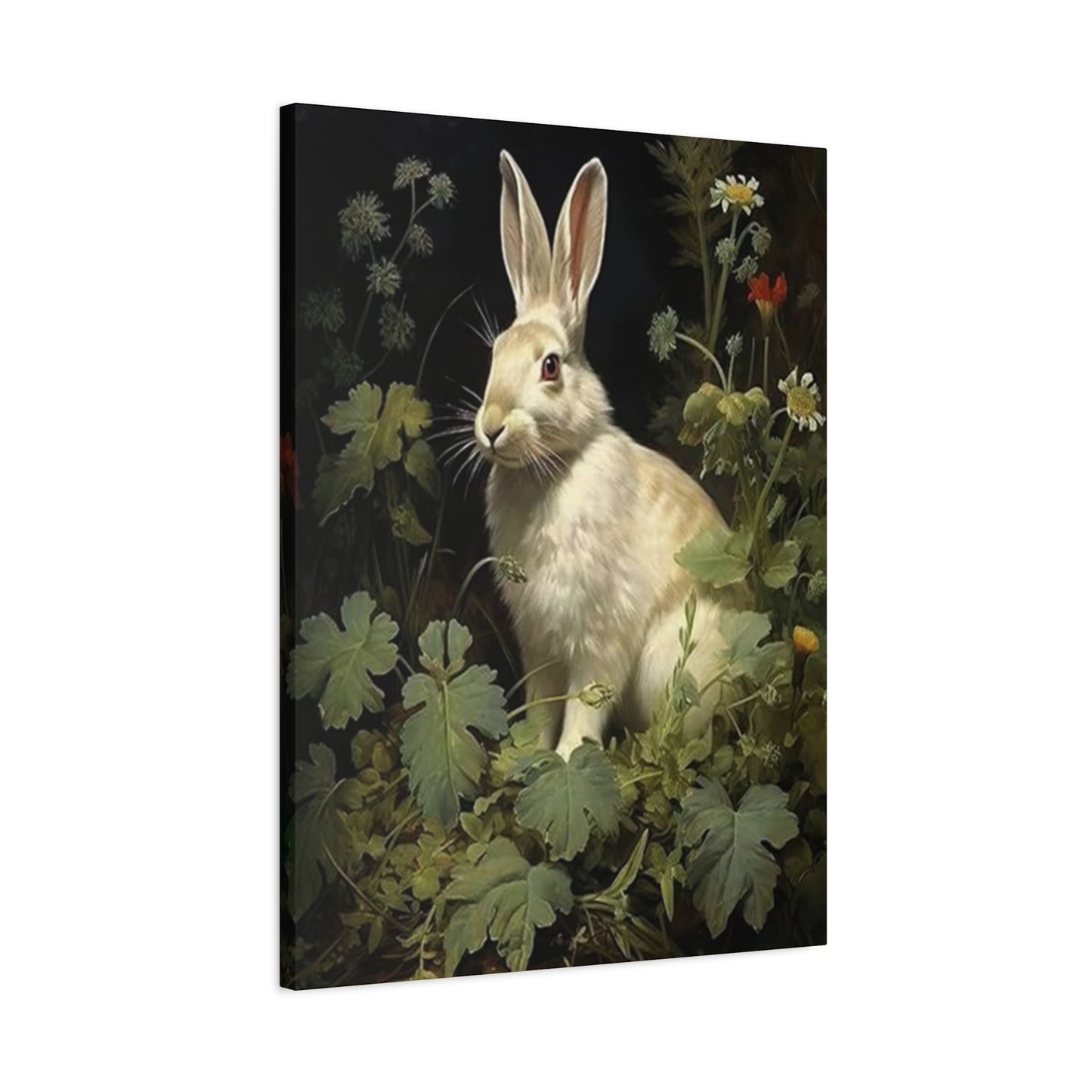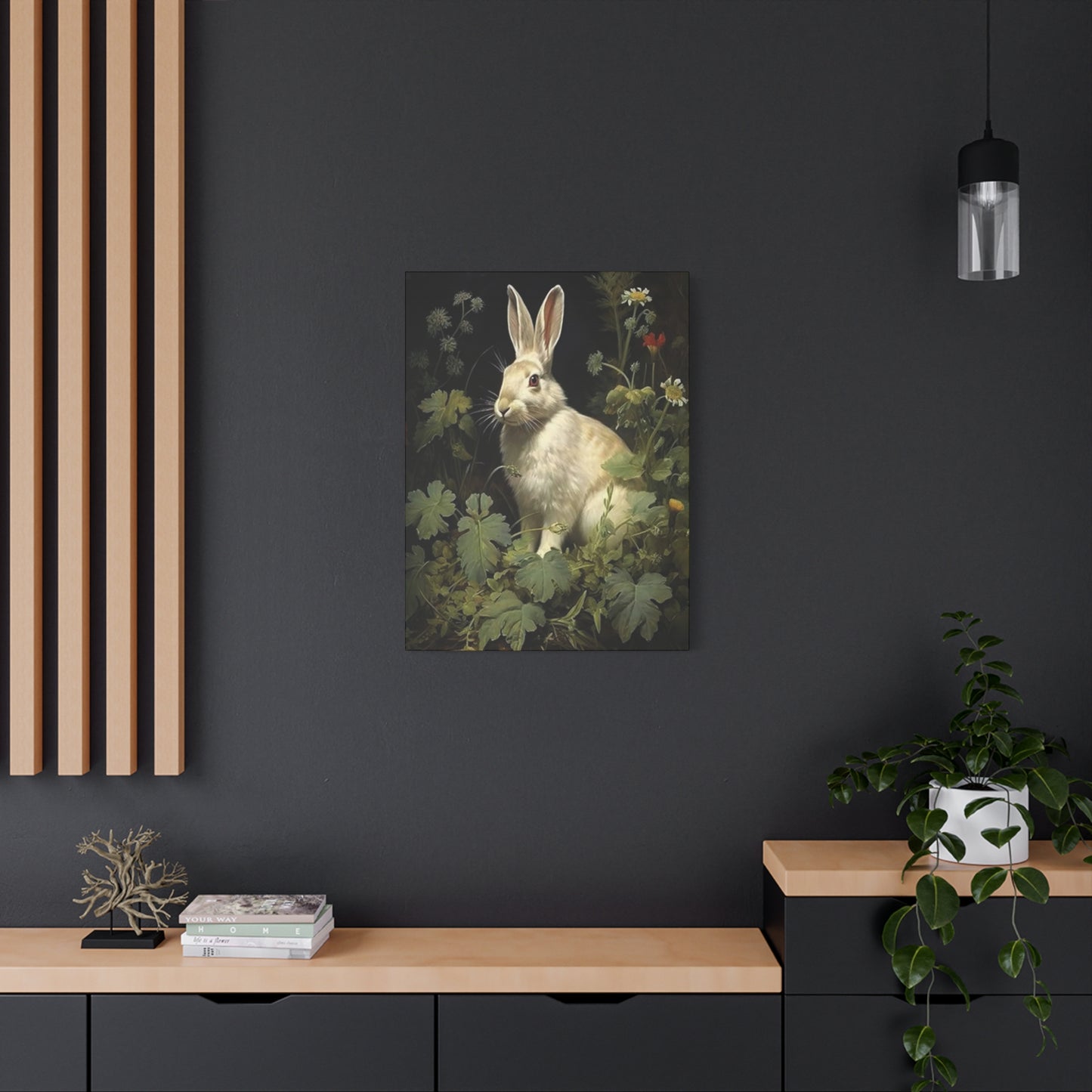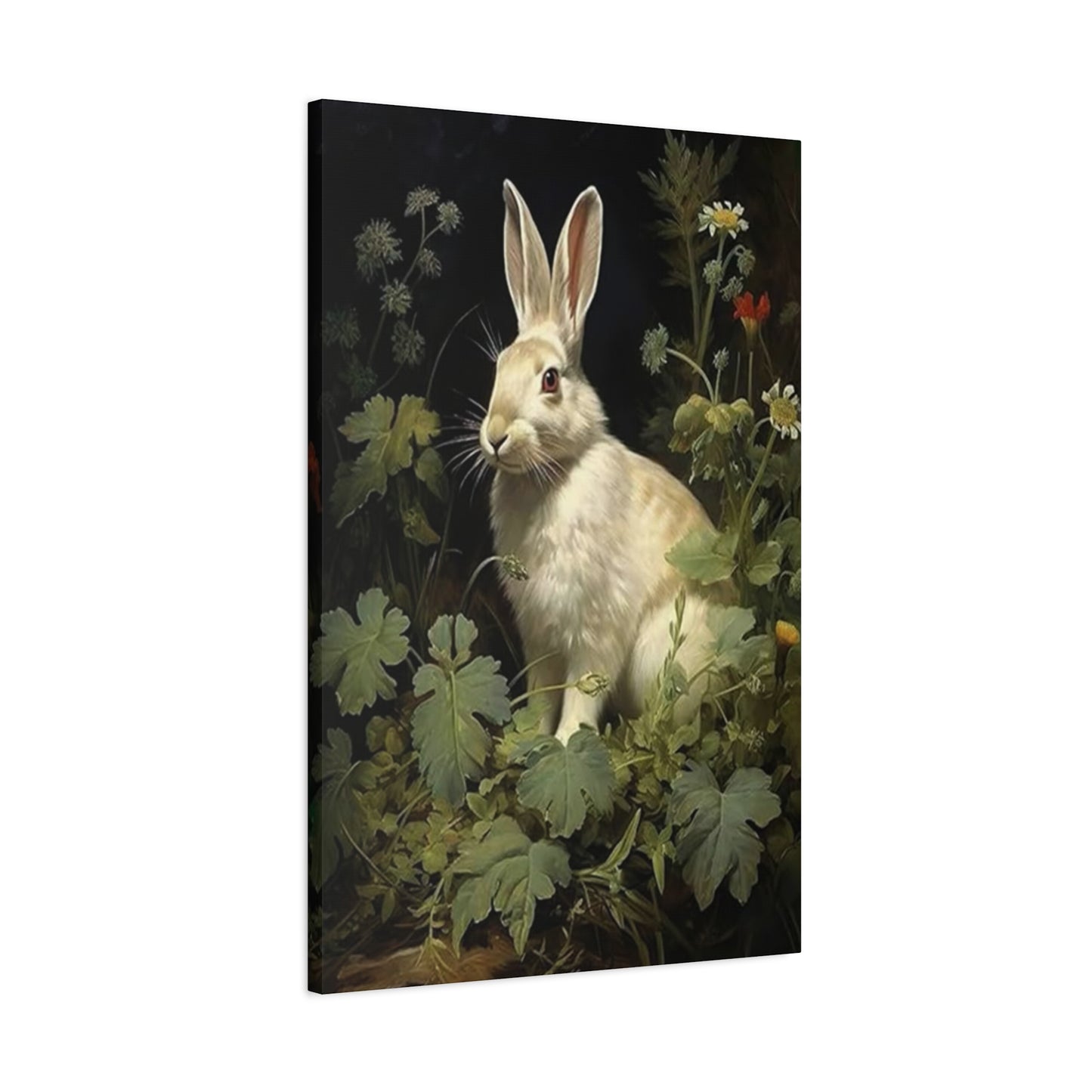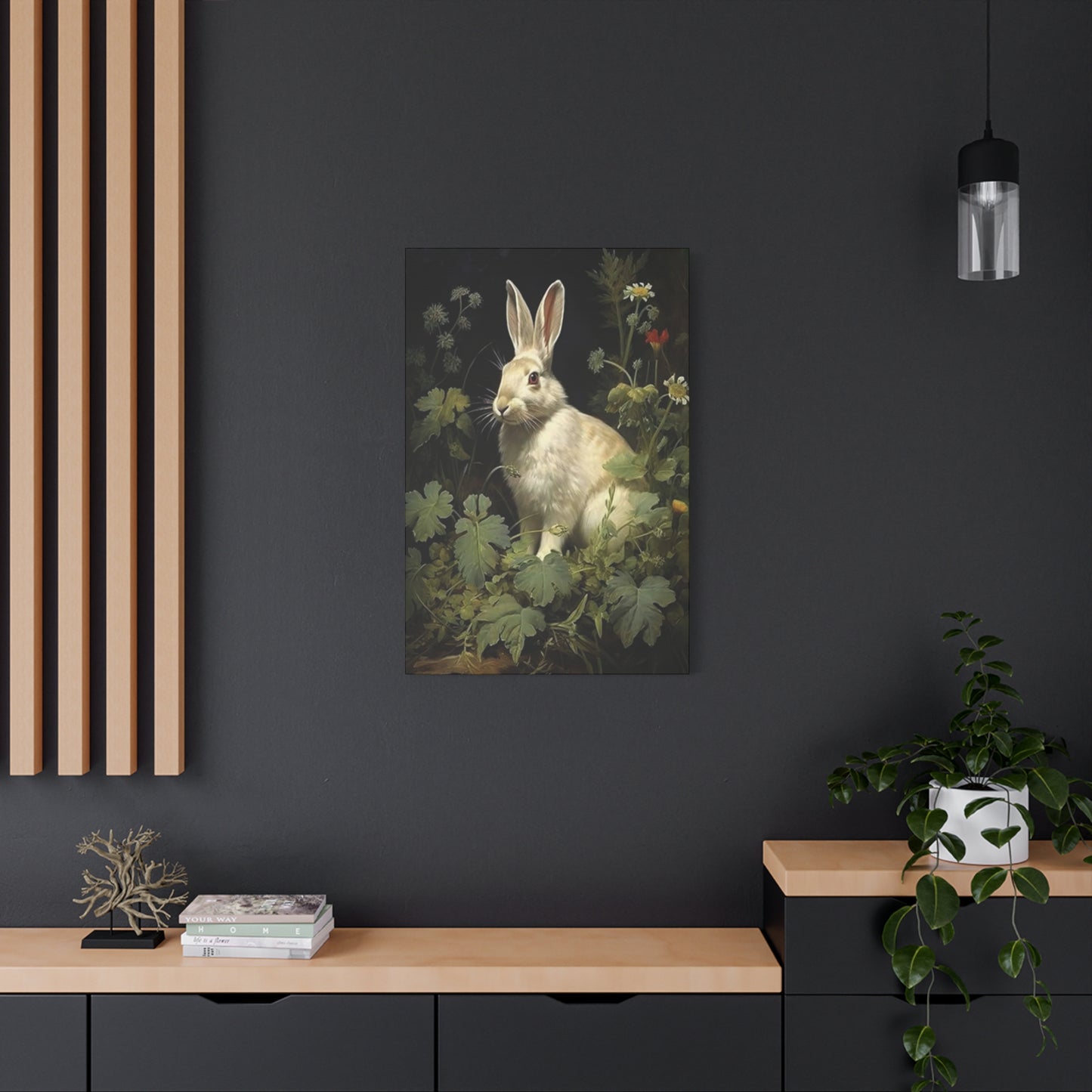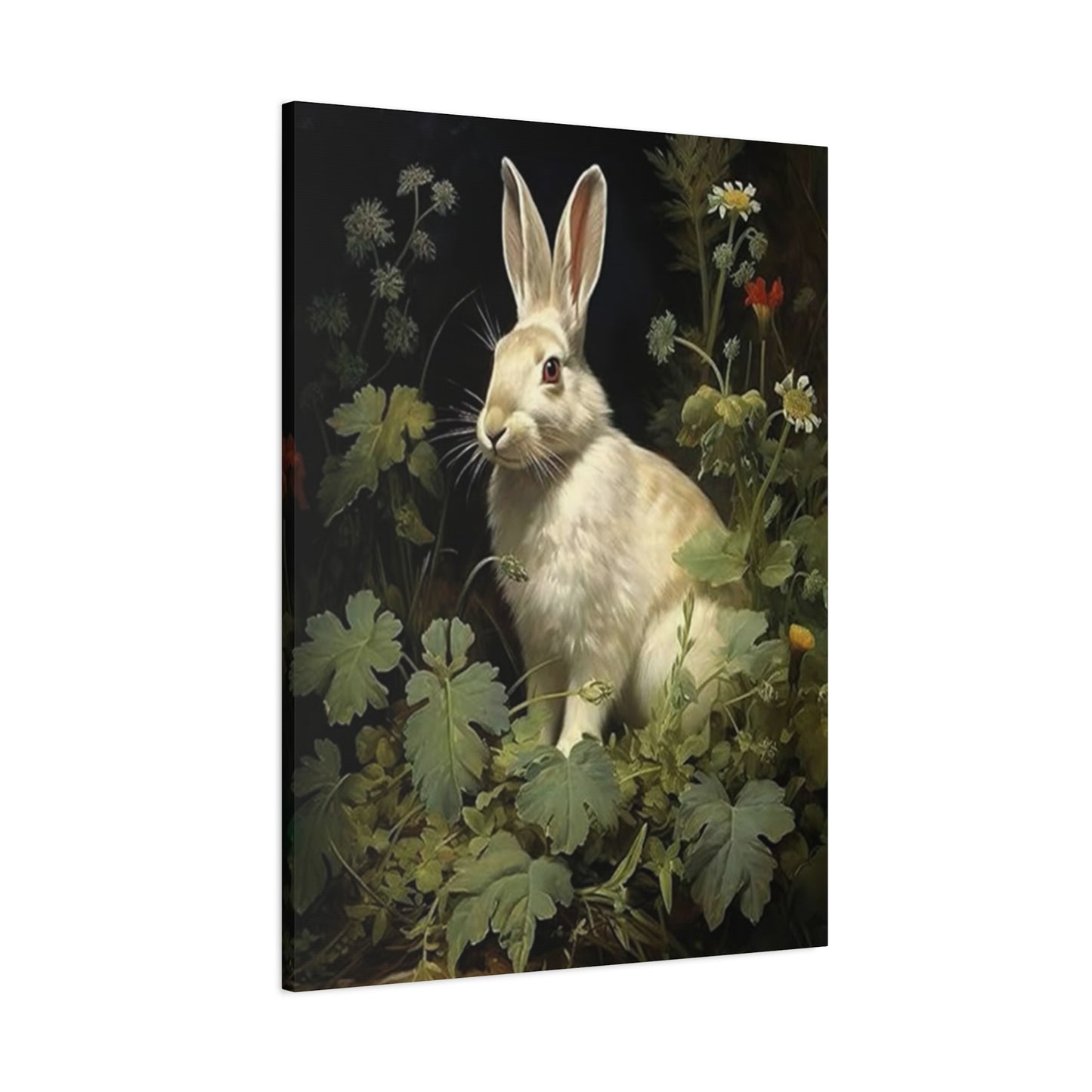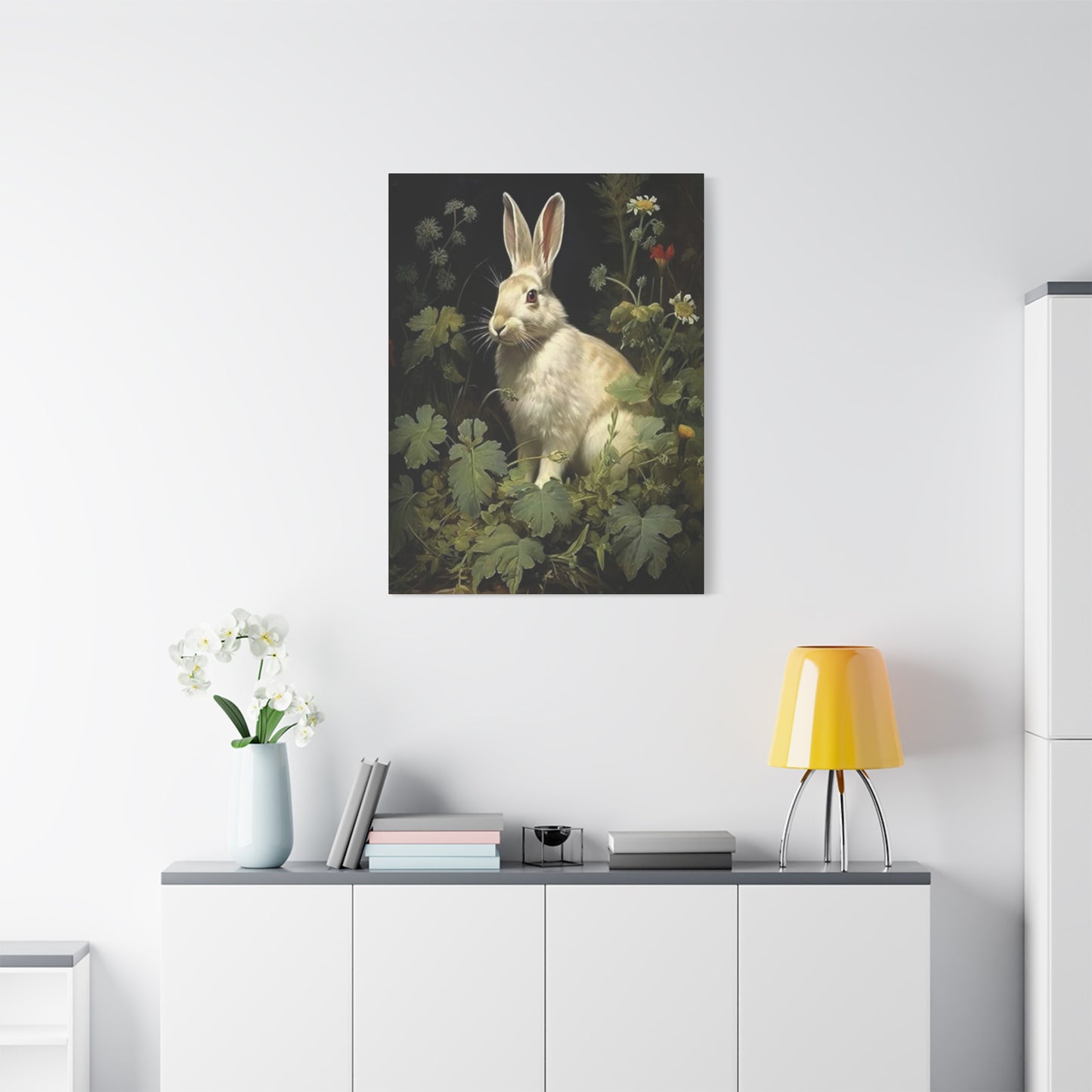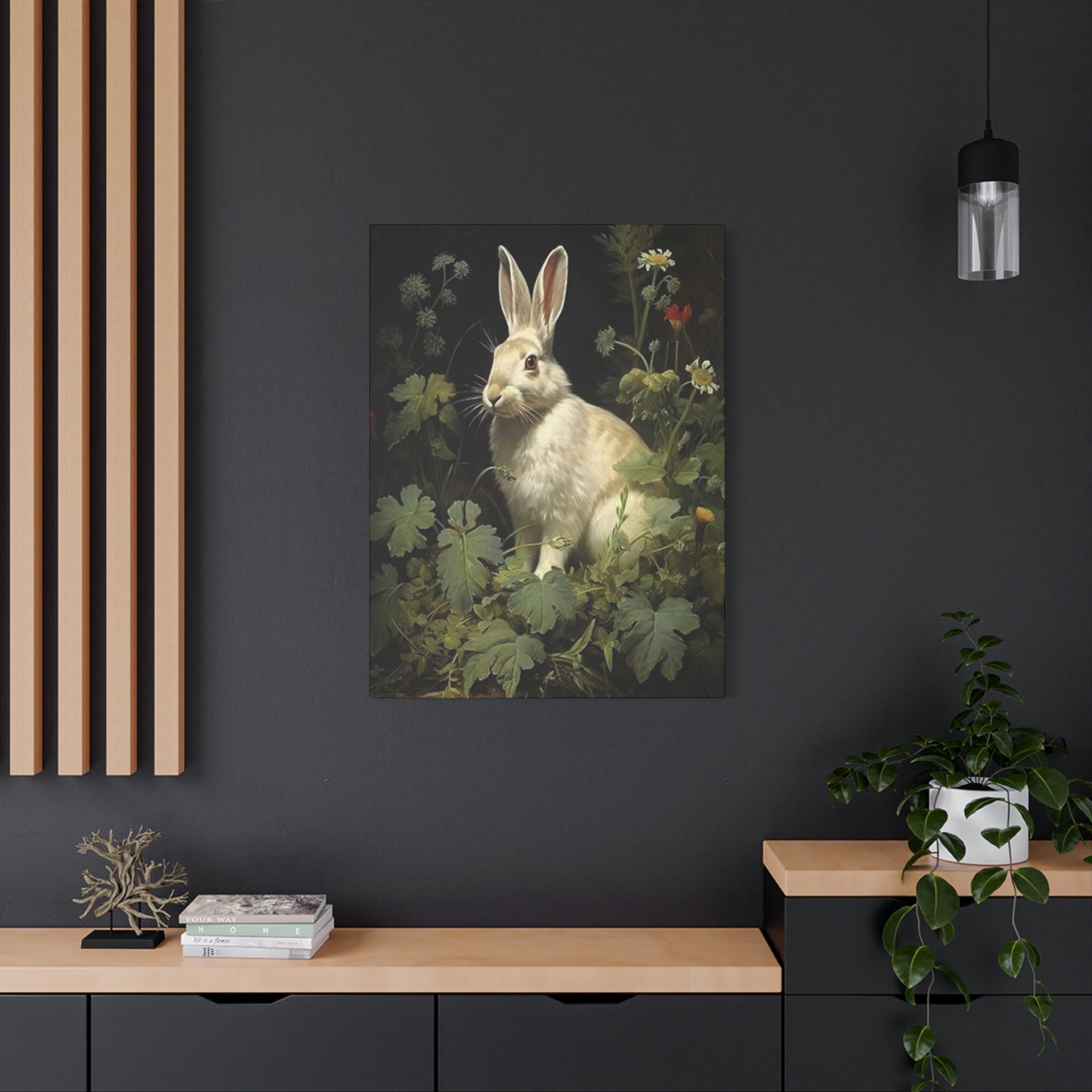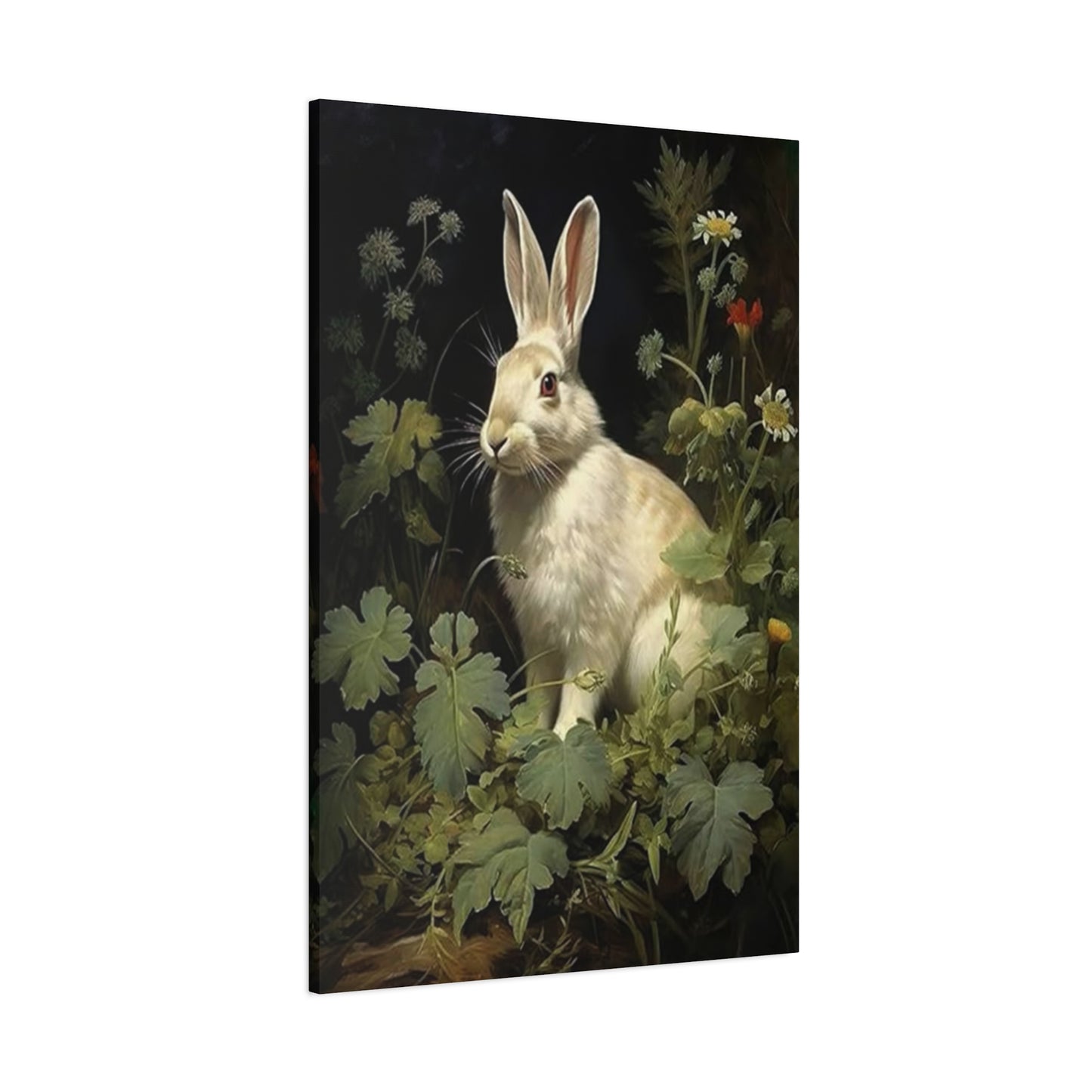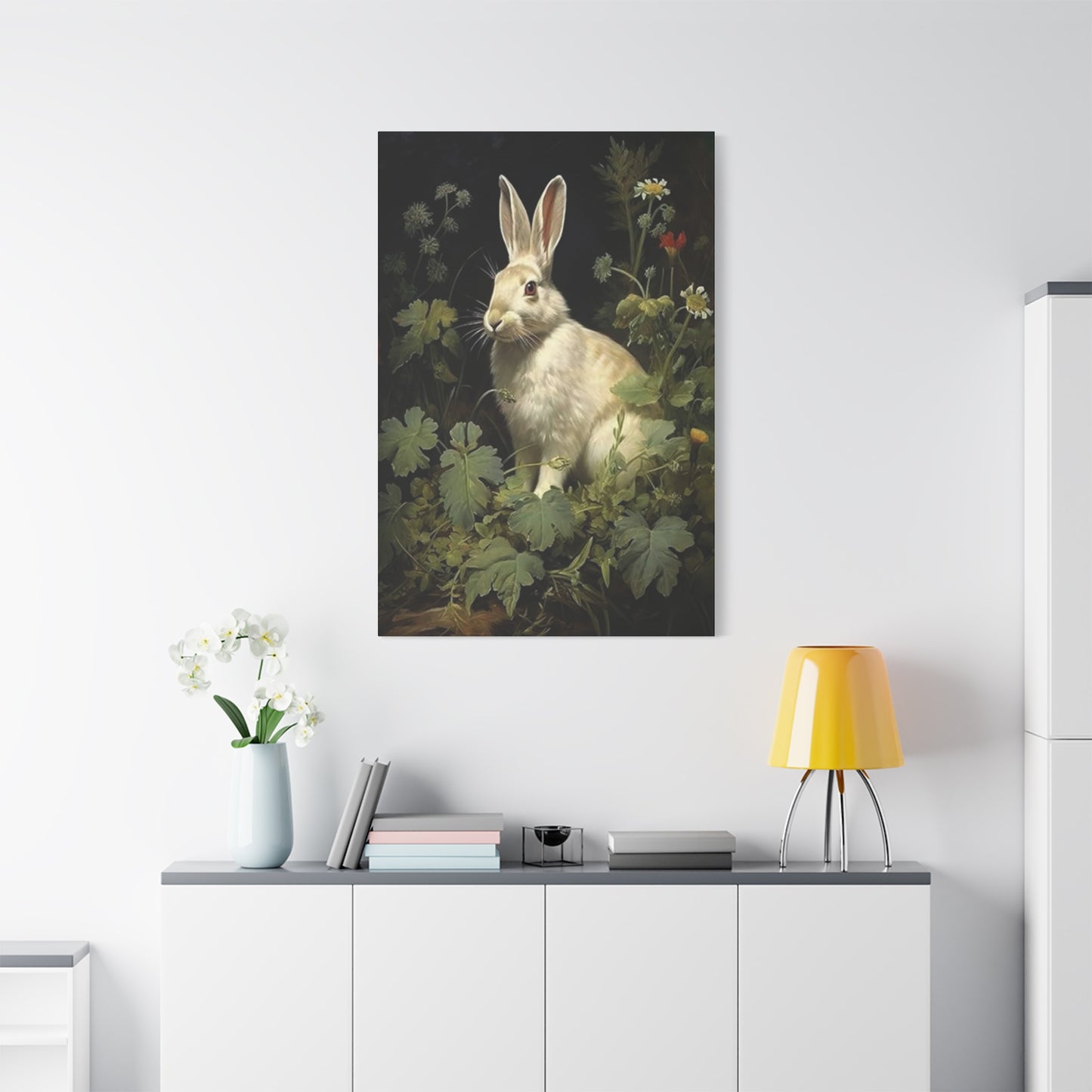Enchanting World of White Rabbit Wall Art: Bringing Magic and Character into Your Living Space
White Rabbit Wall Art has captured the imagination of art enthusiasts and interior decorators for generations. These captivating pieces bring together elements of fantasy, literature, and natural beauty, creating stunning visual statements that resonate across various design aesthetics. Whether you're drawn to the literary connections of these creatures or simply appreciate their elegant charm, white rabbit art offers endless possibilities for enhancing your living environment. From nurseries to sophisticated adult spaces, these artistic representations create conversation pieces that blend whimsy with sophistication. The enduring appeal of rabbit imagery stems from its versatility, allowing it to complement both contemporary minimalist settings and richly decorated traditional interiors. As we explore the many facets of incorporating these delightful artworks into your home, you'll discover how they can elevate your decor while adding layers of meaning and personality to every room they grace.
The Everlasting Appeal of White Rabbit Wall Art
The enduring nature of white Rabbit Wall Art lies in its ability to transcend temporary design trends while maintaining relevance across generations. Unlike fleeting decorative fads that quickly lose their appeal, rabbit imagery carries deep cultural and symbolic significance that resonates with viewers on multiple levels. Throughout history, rabbits have represented various concepts including rebirth, fertility, innocence, and transformation. The white rabbit specifically carries additional layers of meaning, often symbolizing purity, mystery, and the gateway to adventure. These multifaceted associations ensure that such artwork remains meaningful regardless of changing aesthetic preferences.
The visual appeal of white rabbit art stems from the creature's inherently elegant form. The graceful curves of a rabbit's body, the delicate texture suggested in quality artwork, and the expressive nature of their features create compositions that are both soothing and engaging. Artists working with this subject matter have endless opportunities to explore different techniques, from photorealistic renderings that capture every detail of fur and whisker to abstract interpretations that suggest form through color and movement. This artistic flexibility means that white rabbit art can seamlessly integrate into virtually any design scheme, from ultra-modern lofts to cozy cottage-style homes.
Another factor contributing to the lasting quality of these pieces is their emotional resonance. Rabbits evoke feelings of gentleness and wonder, triggering nostalgic connections to childhood stories and fairy tales. This emotional component ensures that viewers form lasting attachments to these artworks, making them treasured possessions rather than disposable decorations. Parents often choose rabbit-themed art for their children's spaces, creating positive associations that children carry into adulthood, thus perpetuating the appeal across generations.
The neutrality of white as a primary color in these artworks provides exceptional versatility in home decor. White coordinates effortlessly with any color palette, allowing the artwork to remain relevant even as you update other elements of your interior design. Whether your walls are painted in bold jewel tones or soft pastels, white rabbit art maintains its visual impact without clashing or appearing dated. This adaptability makes such pieces wise investments that continue providing aesthetic value for years or even decades.
Furthermore, the symbolic journey associated with white rabbits ensures continued cultural relevance. Literary references keep these images in the public consciousness, with new generations discovering classic tales and finding fresh interpretations. Contemporary artists continue reimagining rabbit imagery in innovative ways, proving that this subject matter remains fertile ground for creative exploration. This ongoing artistic conversation surrounding rabbit imagery guarantees that such artwork will never feel stale or outdated, instead gaining layers of meaning as cultural contexts evolve and expand over time.
Arranging Your Space with White Rabbit Canvas Artwork
Creating an aesthetically pleasing environment with white rabbit canvas artwork requires thoughtful consideration of various design elements. The process begins with evaluating your existing space and identifying areas where rabbit art can create maximum visual impact. Consider the architectural features of your room, including wall dimensions, ceiling height, and natural light sources. These factors significantly influence how artwork appears and how it interacts with surrounding elements. A large canvas print works beautifully as a focal point above a sofa or bed, drawing the eye immediately upon entering the room and setting the tone for the entire space.
When styling with canvas prints featuring white rabbits, pay attention to scale and proportion. A common mistake involves selecting artwork that's either too small for the wall space, making it appear insignificant, or too large, overwhelming the room. As a general guideline, canvas art should occupy approximately two-thirds to three-quarters of the available wall space above furniture pieces. For standalone wall arrangements, consider the relationship between the artwork and nearby architectural elements like windows, doors, and built-in features. Proper scaling ensures your rabbit art commands attention without dominating the space inappropriately.
Color coordination plays a vital role in successful styling. While white rabbit imagery naturally offers neutrality, examine the background colors and additional elements within the artwork. Extract complementary colors from the canvas to inform your choices for throw pillows, blankets, curtains, and other soft furnishings. This creates a cohesive design scheme where the artwork feels integrated rather than arbitrarily placed. For instance, if your rabbit canvas features soft blue undertones, incorporating blue accents throughout the room establishes visual harmony. Alternatively, use contrasting colors to make the artwork pop more dramatically against its surroundings.
Layering different textures and materials around your white rabbit canvas enhances the overall aesthetic appeal. Pair smooth canvas prints with rougher elements like woven baskets, natural wood furniture, or chunky knit throws. This textural variety creates depth and interest, preventing the space from feeling flat or one-dimensional. Consider the finish of your canvas as well, with options ranging from matte to high-gloss. Matte finishes work exceptionally well in rooms with abundant natural light, minimizing glare, while glossier finishes can help brighten darker spaces by reflecting available light.
The arrangement of multiple canvas pieces offers additional styling opportunities. Gallery walls featuring several smaller white rabbit prints create dynamic visual impact and allow for creative expression. When creating gallery walls, maintain consistent spacing between pieces, typically two to three inches, to achieve a polished appearance. Mix different sizes and orientations while ensuring the overall composition feels balanced. You might arrange pieces in a grid pattern for a modern, structured look, or create an organic arrangement that follows a more flowing, asymmetrical design. Regardless of your approach, ensure the gallery wall has a clear center point that anchors the arrangement and guides the viewer's eye through the collection.
Creating Joyful Environments with White Rabbit Wall Art
White Rabbit Wall Art excels in establishing playful, imaginative atmospheres within homes. These pieces naturally lend themselves to creating spaces that encourage creativity, wonder, and lightheartedness. When incorporating rabbit art into playful environments, consider the emotional response you want to evoke. Playfulness doesn't necessarily mean childish; instead, it represents an attitude of openness, curiosity, and joy that benefits inhabitants of all ages. The key lies in balancing whimsical elements with sophisticated design choices that prevent the space from appearing juvenile or cluttered.
Start by selecting white Rabbit Wall Art that embodies the playful spirit you're cultivating. Look for pieces featuring rabbits in amusing poses, engaged in unexpected activities, or rendered in imaginative artistic styles. Illustrations showing rabbits wearing waistcoats, checking pocket watches, or tumbling down rabbit holes immediately signal the playful literary connections. Abstract interpretations using bold colors and dynamic compositions inject energy and movement into spaces. Even photographic prints can convey playfulness through unexpected perspectives or compositions that highlight the rabbit's naturally curious and energetic nature.
The placement of Rabbit Wall Art within playful spaces requires strategic thinking. These pieces work wonderfully in areas designated for relaxation, creativity, or social interaction. Reading nooks become more inviting with rabbit art adorning nearby walls, creating thematic connections to beloved stories. Craft rooms and creative studios benefit from the imaginative associations rabbits carry, potentially inspiring artistic endeavors. Family rooms and casual living spaces gain character and conversation-starting focal points through well-chosen Rabbit Wall Art, encouraging family members and guests to engage with the space more fully.
Complement your white rabbit art with playful decorative accessories that enhance the overall theme without overwhelming it. Consider incorporating three-dimensional rabbit figures in various materials like ceramic, wood, or fabric positioned on shelves, mantels, or side tables. These sculptural elements create dialogue with the flat artwork, adding dimensional interest. However, exercise restraint to avoid theme-overkill. Select a few high-quality pieces rather than filling every surface with rabbit-related items. This curated approach maintains sophistication while still celebrating the playful theme.
Lighting dramatically affects how playful spaces feel and how artwork appears within them. Layer different light sources including ambient, task, and accent lighting to create flexibility. Install picture lights or strategically positioned spotlights to highlight your white rabbit canvas prints, especially during evening hours. Consider playful lighting fixtures that complement the theme, such as pendant lights with interesting shapes or table lamps with whimsical bases. Dimmer switches allow you to adjust lighting levels according to activities and moods, transitioning spaces from energetic play areas during the day to calming environments for evening wind-down routines.
Color psychology becomes especially important in playful spaces. While white rabbit art provides a neutral foundation, surround it with colors that promote the desired emotional response. Soft pastels like mint green, pale yellow, or lavender create gentle, soothing playfulness appropriate for younger children or meditation spaces. Brighter, more saturated colors like coral, turquoise, or sunny yellow inject higher energy levels suitable for active play areas or creative studios. The artwork itself can guide your color selections, with hues pulled directly from the canvas ensuring cohesive design that feels intentional rather than random.
Optimal Placement for White Rabbit Wall Artwork
Determining the ideal location for white rabbit wall artwork significantly impacts both the artwork's visual effectiveness and the room's overall ambiance. Several considerations guide placement decisions, starting with practical factors like viewing distance and lighting conditions. Artwork should be positioned at eye level for comfortable viewing, which typically means the center of the piece hangs approximately 57 to 60 inches from the floor. This measurement represents average human eye level in standing position and creates the most natural viewing experience. When hanging art above furniture, maintain a gap of six to eight inches between the furniture top and the artwork's bottom edge.
Living rooms present numerous opportunities for displaying white rabbit wall art. The wall behind the main seating arrangement serves as a natural focal point, making it ideal for larger statement pieces or gallery wall arrangements. Consider the room's traffic patterns and conversation areas when selecting placement. Position artwork where it will be easily visible without requiring awkward neck turning or position shifting. Corner spaces often get overlooked but can become charming vignettes with the addition of white rabbit art flanked by complementary decorative objects on a console table or bookshelf.
Bedroom placement requires special consideration of the room's intimate nature and primary function. Many people enjoy positioning artwork on the wall behind the headboard, creating a beautiful focal point visible upon entering the room. However, consider whether you want visual stimulation in a space meant for rest. Some individuals prefer more calming, minimal artwork in bedrooms, while others enjoy being surrounded by beloved pieces. White rabbit art in bedrooms can be particularly meaningful when it connects to cherished stories or represents personal symbolism. Side walls visible from the bed offer alternative placement that allows you to enjoy the artwork while maintaining a sense of calm on the primary wall.
Hallways and transitional spaces benefit enormously from white rabbit wall art. These often-neglected areas become gallery-like passages that connect different parts of your home while showcasing your aesthetic sensibilities. Narrow hallways work well with vertical or square compositions, while wider passages can accommodate larger horizontal pieces or multiple artworks arranged in a line. Stairway walls present unique opportunities for creating ascending or descending arrangements that guide visitors through your home while providing visual interest during an otherwise purely functional activity.
Kitchen and dining areas increasingly incorporate artwork as these spaces evolve into gathering places rather than purely functional rooms. White rabbit art brings personality to these areas while coordinating with various kitchen styles from farmhouse rustic to sleek contemporary. Position pieces away from direct splatter zones but within easy viewing range from seating areas. Open-concept homes benefit from using consistent artwork themes including white rabbit pieces to create visual flow between kitchen, dining, and living zones while maintaining distinct spatial identities.
Bathroom placement might seem unconventional, but these private spaces offer wonderful opportunities for displaying playful, personal artwork. White rabbit prints in bathrooms create spa-like sanctuaries with whimsical touches. Moisture considerations require proper framing and strategic placement away from direct water exposure. Position pieces on walls opposite showers or bathtubs where they'll be visible during grooming routines or relaxing soaks without being directly exposed to steam and water. The unexpected presence of delightful artwork in utilitarian spaces elevates everyday routines into more pleasurable experiences.
White Rabbit Wall Art for Baby Room Design
Nursery spaces require careful decorative planning that balances visual stimulation with calming influences, making white rabbit prints ideal choices for these special environments. The gentle nature of rabbit imagery creates soothing atmospheres conducive to sleep while providing interesting visual elements that support infant cognitive development. Research indicates that babies benefit from having clear, contrasting images to focus on during alert periods, and white Rabbit Wall Art against colored backgrounds provides this necessary visual stimulation without overwhelming delicate sensory systems.
When selecting white rabbit prints for nurseries, consider the artwork's style and complexity. Simpler, more graphic representations work better for very young infants who are still developing visual acuity. As babies grow into toddlerhood, more detailed and narrative-driven pieces become appropriate and engaging. Many parents choose to invest in quality artwork that can transition with their child through different developmental stages rather than selecting overtly baby-themed pieces that quickly feel outdated. White rabbit art offers this longevity, remaining relevant and appealing as children mature.
Safety considerations paramount in nursery design extend to artwork selection and installation. Ensure canvas prints are securely mounted using appropriate hardware rated for the artwork's weight. Position pieces well out of reach of curious hands as children become mobile. Avoid hanging artwork directly over cribs or changing tables where it could potentially fall, even with secure mounting. Consider using lightweight canvas prints rather than heavy framed pieces in nurseries to minimize risk. Many parents opt for gallery-wrapped canvases without glass, eliminating any possibility of shattered glass creating hazardous conditions.
Color coordination in nurseries requires balancing personal aesthetic preferences with developmental considerations. While traditional pink and blue nurseries remain popular, many contemporary parents embrace gender-neutral palettes featuring greens, yellows, grays, and whites. White Rabbit Wall Art provides flexibility to work within any color scheme. Select prints with background colors that complement your nursery palette, or choose predominantly white pieces that coordinate with everything. Consider how the artwork interacts with other nursery elements including crib bedding, curtains, rugs, and wall paint to create cohesive, harmonious environments.
Thematic coordination can extend beyond the artwork itself to encompass the entire nursery design. A storybook-themed nursery might feature white rabbit prints alongside artwork referencing other beloved characters. Woodland or nature themes naturally incorporate rabbit imagery among trees, flowers, and other creatures. Literary-inspired nurseries celebrating classic tales find perfect expression through white Rabbit Wall Art that references these timeless stories. Whatever theme you choose, ensure it brings you joy, as you'll spend considerable time in this space during those early months and years.
Positioning artwork within nurseries requires thinking about your own viewing angles as much as the baby's. You'll spend countless hours in the nursery feeding, rocking, and comforting your child. Position some artwork where you can easily view it from the nursing chair or rocker, giving yourself pleasant visual focus during these quiet moments. Other pieces might be positioned where they're visible from the crib, providing visual interest when baby is awake and alert. Create a balanced distribution of artwork around the room rather than concentrating all pieces on a single wall.
Lighting in nurseries needs careful planning to accommodate various activities at different times. Install dimmable overhead lighting that can be brightened for diaper changes and play sessions or lowered for nighttime feedings and bedtime routines. Add picture lighting or soft wall sconces near artwork to create gentle ambient lighting during evening hours. Avoid positioning bright lights directly on canvas prints, which can cause fading over time. Blackout curtains or shades help regulate natural light, protecting both artwork and supporting healthy sleep patterns by controlling the room's brightness levels.
Showcasing Your White Rabbit Canvas Through Proper Framing
The framing choices you make dramatically impact how white rabbit canvas artwork appears and how well it integrates into your overall design scheme. Canvas prints offer unique framing options distinct from traditional paper-based artwork. Many contemporary canvas pieces feature gallery wrapping, where the image continues around the sides of the stretcher frame, creating finished edges that require no additional framing. This clean, modern presentation works beautifully in contemporary spaces and allows the artwork to make bold statements without competing visual elements.
Gallery-wrapped canvases hung frameless create streamlined, minimalist presentations that emphasize the artwork itself. This approach works particularly well with photographic prints or modern illustrations where clean lines and contemporary aesthetics drive the design. The floating effect of frameless canvas creates dimensional interest, as the artwork projects slightly from the wall rather than sitting flush within a frame. This subtle depth adds sculptural quality to two-dimensional artwork. When choosing gallery-wrapped pieces, examine the sides carefully to ensure the image wrapping or color continuation complements the front image and doesn't create distracting visual interruptions.
Traditional framing remains popular for canvas prints, especially when coordinating with existing framed artwork or maintaining classical interior design aesthetics. Frames add protective benefits while providing opportunities to enhance or complement the artwork's visual impact. When selecting frames for white rabbit canvas prints, consider the artwork's style and your room's overall design. Simple frames in natural wood tones create organic, understated presentations that allow the artwork to dominate. Painted frames in white, black, or colors pulled from the artwork itself provide clean, coordinated appearances. More ornate frames suit traditional or vintage-inspired spaces, adding decorative interest that enhances rather than overwhelms the central image.
Frame color and finish significantly influence how artwork reads within a space. White frames create seamless integration with white or light-colored walls, allowing the artwork's subject matter to float without heavy visual borders. Black frames provide strong contrast that makes artwork pop dramatically, creating bold statements particularly effective in modern or minimalist interiors. Natural wood frames add warmth and organic texture, working beautifully with rabbit imagery's natural associations. Metallic frames in gold, silver, bronze, or copper introduce glamorous touches suitable for more formal spaces or when creating gallery wall arrangements with varied frame finishes.
Mat boards, while more commonly associated with paper prints, can be incorporated into canvas framing for specific aesthetic effects. Floating frames with spacers create gaps between the canvas edges and the frame itself, producing museum-quality presentations with sophisticated visual impact. This technique adds considerable dimension and draws attention to the artwork as a precious, carefully curated piece. The floating effect works particularly well with smaller canvas prints that might otherwise feel lost on large walls, as the frame and spacing increase the overall visual footprint while maintaining the intimate scale of the actual artwork.
Consider the practical aspects of framing including weight, installation requirements, and long-term maintenance. Heavily framed pieces require sturdy mounting hardware and proper wall anchoring, especially important for drywall installation. Ensure you have appropriate picture hanging hardware rated for your artwork's weight. Glass or acrylic glazing adds weight and cost but provides protection for valuable pieces, though most canvas prints don't require glazing. If you do choose glazing, select UV-protective varieties that minimize fading from light exposure. Museum glass offers the ultimate protection with minimal reflection, though at premium prices. Weigh these practical considerations against your budget and the artwork's value, both monetary and sentimental.
Professional framing services offer expertise in selecting and executing appropriate framing solutions for your white rabbit canvas prints. While DIY framing proves economical for straightforward projects, valuable or challenging pieces benefit from professional handling. Framers provide guidance on frame selection, mat colors and widths, glazing options, and mounting techniques. They ensure precise measurements, clean installation, and proper materials that won't damage artwork over time. Consider professional framing an investment in preserving and showcasing your artwork to maximum effect, particularly for pieces you intend to enjoy for many years.
Infusing Delight Through White Rabbit Wall Art
The inherent charm of white Rabbit Wall Art makes it exceptionally effective for introducing whimsical elements into living spaces without sacrificing sophistication. Whimsy in interior design represents playfulness, imagination, and unexpected delight rather than childishness. Successfully incorporating whimsical elements requires balancing these playful touches with grounding design elements that maintain adult sensibilities. White rabbit art achieves this balance naturally, carrying associations with beloved stories and natural wonder while offering aesthetic versatility that works within refined design schemes.
Strategic placement of white Rabbit Wall Art injects personality into otherwise neutral or conventional spaces. A single striking rabbit print can serve as a conversation starter in an entryway, immediately signaling to visitors that they're entering a home where creativity and imagination are valued. This sets a welcoming, personable tone that puts guests at ease. Living rooms and family spaces benefit from the approachable nature of whimsical rabbit art, creating environments that feel less formal and more inviting than spaces dominated by abstract or traditional landscape artwork.
The whimsical quality of rabbit art pairs beautifully with unexpected decorative juxtapositions. Consider hanging a sophisticated white rabbit portrait in an otherwise traditional, formal dining room, creating delightful surprise that softens the space's potentially intimidating formality. Place vintage-style rabbit illustrations in ultra-modern lofts, creating intriguing contrasts between old and new aesthetics. These unexpected combinations demonstrate design confidence while keeping spaces from feeling too serious or theme-rigid. The key lies in allowing different styles to coexist in ways that feel intentional rather than accidental or careless.
Color plays a crucial role in how whimsy reads within a space. While white rabbit imagery provides inherent neutrality, the colors surrounding and accompanying these pieces significantly impact the overall feel. Soft, muted palettes create gentle whimsy appropriate for bedrooms and reading nooks where calm atmosphere matters. Brighter, more saturated color schemes amplify the playful energy, working well in children's spaces, creative studios, and active living areas. Even within neutral color schemes, whimsy emerges through the subject matter itself and the decision to celebrate something as delightfully specific as white rabbits.
Accessories and complementary design elements can enhance or temper the whimsical quality of white Rabbit Wall Art. Pair rabbit prints with other playful elements like unusual light fixtures, quirky throw pillows, or vintage curiosities to create layered, collected-over-time aesthetics. Alternatively, surround rabbit art with clean-lined furniture and minimal accessories, allowing the artwork alone to carry the whimsical weight. This restrained approach often proves more sophisticated, preventing spaces from tipping into overly cutesy territory. The contrast between playful subject matter and serious presentation creates tension that keeps spaces visually interesting.
Personal significance amplifies the whimsical appeal of white Rabbit Wall Art. Pieces that connect to favorite childhood stories, memorable experiences, or meaningful symbolism carry extra resonance that transcends pure decoration. Share these personal connections with visitors when appropriate, transforming artwork from simple wall covering into storytelling prompts that reveal personality and values. This narrative dimension adds depth to whimsical choices, demonstrating that playfulness can coexist with substance and meaning. Your white rabbit art becomes not just decoration but physical manifestation of the stories and experiences that shape your identity.
The Captivating Beauty of White Rabbit Canvas Artwork
White rabbit canvas prints possess distinctive visual qualities that make them particularly appealing decorative choices. The combination of subject matter, artistic medium, and production quality creates pieces that capture attention while maintaining enduring aesthetic value. Canvas as a medium offers texture and depth that paper prints cannot replicate, with woven fabric showing through the printed image to create subtle, organic surface interest. This texture adds warmth and tactile appeal that draws viewers closer, encouraging intimate engagement with the artwork rather than distant, casual viewing.
The charm of these pieces stems partly from the rabbit itself as an artistic subject. Rabbits offer naturally elegant forms with graceful curves, expressive faces, and intricate details that reward close observation. Artists rendering white rabbits work with interesting challenges of depicting white-on-white elements, creating depth and dimension through subtle tonal variations, shadows, and highlights. The best white Rabbit Wall Art demonstrates technical mastery of these challenges while maintaining accessibility and emotional resonance. Even viewers without artistic training can appreciate the skill evident in well-executed rabbit portraits.
Canvas prints provide affordable access to artwork that might otherwise remain financially out of reach. While original paintings command premium prices, high-quality canvas reproductions bring artistic beauty into everyday spaces at accessible price points. Modern printing technologies achieve remarkable color accuracy and detail reproduction, creating pieces that rival originals in visual impact. This democratization of art allows more people to surround themselves with images that inspire, comfort, and delight, regardless of budget constraints. White rabbit canvas prints exemplify how quality reproductions can enhance living spaces meaningfully.
The versatility of canvas prints extends to customization possibilities. Many providers offer options for adjusting sizes, orientations, and even color treatments to suit specific needs. This flexibility allows you to find or create the perfect piece for your particular space rather than compromising on either artwork or room design. Some services even print custom photographs or illustrations on canvas, enabling you to commission unique white Rabbit Wall Art that exists nowhere else. These personalized pieces carry additional significance while maintaining the superior presentation quality of professionally produced canvas prints.
Durability constitutes another significant advantage of canvas prints. Properly produced and cared for, canvas artwork resists fading, warping, and other degradation far better than paper-based alternatives. The fabric surface proves more forgiving than paper, showing fewer signs of minor handling or environmental exposure. Canvas prints can withstand typical household conditions including moderate humidity and temperature fluctuations without suffering damage. This resilience makes them practical choices for high-traffic areas, children's rooms, and other spaces where artwork faces greater risk of incidental contact or environmental stress.
The emotional resonance of white rabbit canvas prints shouldn't be underestimated. Beyond aesthetic appeal, these pieces evoke feelings and memories that enrich daily life. The gentle nature of rabbit imagery creates calming influences in stressful environments, providing visual respite from demanding routines. Literary connections trigger nostalgic feelings and spark conversations about beloved stories. Nature associations ground inhabitants in the organic world despite urban or suburban settings. These emotional dimensions transform decorative objects into meaningful possessions that contribute to overall wellbeing and life satisfaction, demonstrating how thoughtful art selection impacts quality of life beyond mere visual pleasure.
Integrating White Rabbit Wall Art in Contemporary Living Spaces
Modern home design embraces clean lines, minimal ornamentation, and carefully curated decorative elements that make intentional statements. White rabbit art integrates beautifully into contemporary interiors, offering organic warmth that softens potentially stark modern aesthetics. The key to successful incorporation lies in selecting pieces whose style aligns with modern sensibilities rather than fighting against them. Photographic prints of actual rabbits create realistic focal points. Minimalist illustrations using simple line work or geometric abstraction maintain modern aesthetics while introducing the rabbit motif. Even traditional rabbit portraits work in modern contexts when presented in streamlined frames or gallery-wrapped formats.
Color palettes in modern homes typically feature neutrals punctuated by strategic color accents. White Rabbit Wall Art naturally aligns with neutral schemes while offering opportunities to introduce subtle color through background elements or artistic treatments. Black and white rabbit photographs or illustrations create striking statements in monochromatic spaces. Pieces featuring single accent colors echo and reinforce color choices elsewhere in the room, creating cohesive design schemes. The predominantly white coloring of the rabbits themselves ensures these pieces never overwhelm spaces or clash with existing palettes, maintaining the visual calm essential to modern design philosophy.
Scale and proportion take on heightened importance in modern interiors where every element receives scrutiny. Oversized canvas prints make dramatic statements in minimalist rooms where few decorative elements compete for attention. A single large white rabbit portrait above a modern sofa creates instant focal points while maintaining the clean, uncluttered aesthetic modern design demands. Conversely, smaller pieces arranged in precise grids or geometric patterns satisfy modern preferences for order and intentionality. The negative space surrounding artwork becomes as important as the artwork itself, with generous margins allowing pieces to breathe rather than crowding walls with excessive decoration.
Material and finish choices influence how well white rabbit art integrates into modern homes. Gallery-wrapped canvases without frames align perfectly with modern aesthetics, offering clean presentations without traditional framing fussiness. Floating frames in metal finishes introduce industrial touches that complement modern materials like steel, glass, and concrete. High-gloss finishes on canvas prints reflect light dynamically, adding visual interest in spaces where texture might be limited. Matte finishes provide sophisticated subtlety that prevents artwork from competing with statement furniture pieces or architectural features.
Functional spaces in modern homes including home offices, kitchens, and bathrooms increasingly incorporate artwork as design elements. White rabbit prints bring personality to these utilitarian areas without compromising their functional efficiency. A striking rabbit photograph in a modern kitchen adds warmth without cluttering limited counter space. Office walls featuring minimalist rabbit illustrations create calming focal points during intense work sessions. The unexpected presence of animal imagery in these practical spaces demonstrates the modern design principle that beauty and function need not exist separately but can enhance each other.
Technology integration characterizes many modern homes, presenting both challenges and opportunities for artwork display. Consider how white rabbit canvas prints interact with television screens, computer monitors, and smart home devices. Position artwork to create visual balance without competing directly with screens for attention. Some contemporary spaces feature motorized art displays that rotate pieces or conceal televisions behind artwork when not in use. While high-tech solutions appeal to some, most modern homes simply require thoughtful placement ensuring technology and art coexist harmoniously. White Rabbit Wall Art provides organic counterpoint to digital technology, grounding spaces in natural imagery that offers respite from screen-dominated modern life.
Literary Connections of White Rabbit Wall Art
White rabbit prints carry rich literary associations that add layers of meaning beyond pure aesthetics. The most famous literary rabbit appears in Lewis Carroll's classic tale, where a white rabbit checking his pocket watch leads a young girl into a fantastical underground world. This iconic character has permeated popular culture for over 150 years, becoming shorthand for adventure, curiosity, and the threshold between ordinary and extraordinary experiences. White Rabbit Wall Art often references this beloved character either explicitly through period costume details or implicitly through pose and composition that evoke the famous story.
The literary connection makes white rabbit art particularly appealing to book lovers and those who value intellectual pursuits. Displaying such artwork signals cultural literacy and appreciation for classic literature. It demonstrates that the homeowner values stories, imagination, and the timeless lessons contained in children's literature that resonates throughout life. This intellectual dimension elevates white rabbit art beyond cute animal pictures, positioning them as sophisticated references that reward knowledge and create connection points with fellow literature enthusiasts who recognize the references.
Beyond the most famous example, rabbits appear throughout world literature in various cultural contexts. Folklore and fairy tales from multiple traditions feature rabbit characters representing cleverness, resourcefulness, and sometimes trickster qualities. These stories have influenced artistic representations of rabbits across cultures and time periods. White Rabbit Wall Art may incorporate elements from these diverse storytelling traditions, creating pieces that reference specific tales or synthesize multiple influences into unique artistic visions. Understanding these varied literary contexts enriches appreciation for rabbit-themed artwork and reveals the depth of meaning these seemingly simple images can carry.
Contemporary artists continue exploring rabbit imagery in ways that reference literary traditions while adding modern perspectives. Illustrated editions of classic tales inspire new generations of artists to reimagine familiar characters. Some artists create original narratives featuring rabbit characters, developing visual storytelling that stands alone as artistic statements while nodding to literary predecessors. Others deconstruct famous rabbit imagery, creating conceptual pieces that comment on literary fame, nostalgia, or the nature of storytelling itself. These contemporary approaches keep rabbit imagery relevant and prevent it from becoming purely nostalgic or backward-looking.
Displaying white rabbit prints alongside beloved books creates meaningful vignettes that celebrate literary passions. Position Rabbit Wall Art above bookshelves filled with treasured volumes, establishing clear thematic connections. Create reading nooks where rabbit prints set the scene for settling in with good books. Library rooms and dedicated reading spaces benefit enormously from white Rabbit Wall Art that reinforces these spaces' literary purposes. The visual presence of rabbit imagery serves as constant reminder to make time for reading, reinforcing values and intentions that might otherwise get lost in busy daily routines.
Educational opportunities arise from literary Rabbit Wall Art, particularly in homes with children. These pieces provide natural starting points for introducing classic stories and discussing themes like curiosity, bravery, and imagination. Reading original tales together while surrounded by related artwork creates multi-sensory experiences that deepen comprehension and memory formation. As children grow, the artwork continues resonating while taking on new meanings as they develop more sophisticated understanding of literary techniques, symbolism, and cultural impact. This evolving relationship with artwork parallels the lifelong process of returning to beloved stories and discovering new layers with each reading.
The Gift-Giving Appeal of White Rabbit Wall Art
White rabbit art makes exceptional gifts for numerous occasions and recipients, combining thoughtfulness with broad appeal. The universal charm of these pieces ensures they'll be appreciated regardless of the recipient's specific taste in art or home décor style. When selecting Rabbit Wall Art as gifts, consider the recipient's living situation, color preferences, and personal interests. These factors guide you toward pieces that will integrate seamlessly into their existing spaces while bringing joy and meaning. The literary associations of white rabbits make these pieces particularly suitable for book lovers, teachers, librarians, and anyone who values storytelling and imagination.
Baby showers and nursery preparations present perfect occasions for gifting white rabbit prints. New parents appreciate practical, beautiful items that help them create nurturing environments for their children. A quality canvas print in appropriate nursery colors becomes treasured décor that may hang in their child's room for years, carrying memories of this special time. Include accompanying information about the artwork's symbolism, literary connections, or care instructions to demonstrate the thought you put into the selection. Coordinate with other nursery gifts when possible, creating cohesive gift packages that help parents establish design schemes.
Housewarming gifts help new homeowners make their spaces feel personal and complete. White Rabbit Wall Art provides personality and warmth that empty walls desperately need in new residences. Choose sizes and styles appropriate to the recipient's taste based on your knowledge of their preferences. When uncertain, opt for medium-sized pieces and neutral presentations that offer flexibility in placement. Include mounting hardware with your gift to remove barriers to immediate display. Consider creating custom pieces using printing services, selecting specific size and color options that align with the recipient's new space based on your knowledge of their home.
Milestone celebrations including graduations, weddings, and significant birthdays call for meaningful gifts that mark important life transitions. White Rabbit Wall Art symbolizes new beginnings and adventures, making it thematically appropriate for these occasions. Select pieces whose style and sophistication match the recipient's life stage, avoiding overly childish treatments for adult recipients. For graduates, choose pieces suggesting the exciting journey ahead. Wedding gifts might feature paired rabbits or imagery suggesting home and partnership. Birthday gifts can reflect the recipient's personality, interests, or design aesthetic while incorporating the delightful rabbit motif.
Holiday gifting benefits from the universal appeal and non-religious nature of white Rabbit Wall Art. These pieces suit recipients of any background or belief system, avoiding the challenges of selecting culturally or religiously specific items. The winter association of white animals makes rabbit art particularly apropos for cold-weather holidays without being overtly connected to specific celebrations. Include thoughtful presentation with quality gift wrapping that protects the artwork while building anticipation. Consider adding companion gifts like cozy blankets, good books, or hot beverage supplies to create themed gift packages centered around comfort and home.
Corporate and professional gifts present unique challenges requiring appropriate formality and universal appeal. White rabbit prints in sophisticated presentations strike the right balance between personal and professional. Select pieces with artistic merit and refined presentations suitable for office environments. Medium-sized prints in professional frames work well for office décor, adding personality without dominating spaces where clients and colleagues gather. Include brief notes explaining your gift choice, particularly if literary or symbolic connections make the selection especially meaningful. These thoughtful touches distinguish your gift from generic corporate presents while maintaining professional appropriateness.
Simplified Approaches to White Rabbit Canvas Artwork
Minimalist design emphasizes simplicity, functionality, and intentionality, focusing on removing unnecessary elements to highlight the essence of a subject. This approach has gained immense popularity in interior design and art, where less is often more. White rabbit canvas artwork, when approached with minimalist principles in mind, can become a stunning centerpiece that conveys elegance and simplicity. The key to achieving this aesthetic lies in thoughtful selection, presentation, and composition, ensuring that the artwork complements and enhances the space rather than overwhelming it.
At the heart of minimalist design is the idea of "less is more." In the case of white rabbit canvas artwork, this can be interpreted in several ways. First, the artwork should feature clean, uncluttered lines and a sense of spaciousness. A white rabbit, often symbolizing purity, mystery, or even curiosity, lends itself well to minimalist art because of its inherent simplicity. The artist can focus on the form of the rabbit without excessive details or distractions, allowing the viewer to appreciate the subject in its most distilled form.
Color palette plays a significant role in minimalist artwork. White, black, or neutral tones—like soft greys, muted blues, or pale creams—are commonly used to create a calm, balanced atmosphere. A white rabbit, against a monochromatic or subtly colored background, instantly draws attention. The white of the rabbit can stand out against dark or contrasting hues, making it the focal point of the piece. By using a limited color scheme, the artwork maintains a sense of calm and clarity, which is a key principle of minimalist aesthetics. This approach helps in creating a sense of harmony and balance in the space where the canvas is displayed.
In terms of composition, minimalist white rabbit canvas artwork typically avoids busy or overly intricate designs. The rabbit may be presented in a simple, central position or may be placed slightly off-center to create a sense of balance and visual interest. Negative space, the area around the rabbit, is just as important as the subject itself. In minimalist art, negative space is not seen as empty but as a vital part of the overall composition, giving the piece room to breathe and making the subject even more impactful. A well-placed white rabbit on a large, unadorned canvas allows for a powerful yet understated statement.
Another important aspect of minimalist design is intentionality in presentation. A simple, sleek frame or no frame at all can allow the artwork to blend seamlessly into its environment. The canvas itself should be of high quality, with a smooth surface that enhances the delicate detail of the rabbit’s form. The final placement of the piece in a room should also be carefully considered. Minimalist spaces thrive on openness and simplicity, so the artwork should be positioned where it can be appreciated in its entirety, without distractions from surrounding elements.
In conclusion, white rabbit canvas prints can be an ideal choice for those looking to infuse minimalist design principles into their home or office. By focusing on clean lines, a limited color palette, and careful composition, these pieces can become not just decorations, but powerful statements of simplicity, beauty, and intention.
Final Thoughts
The beauty of White Rabbit wall art extends far beyond its surface appeal. It taps into something deeper—an invitation to bring a sense of whimsy, magic, and storytelling into our homes. Whether you're a lifelong fan of Alice’s Adventures in Wonderland or simply someone looking for a unique focal point for your space, White Rabbit wall art offers a wonderful way to add character and enchantment to your living environment. What makes this artwork so special is its ability to transcend age and style, effortlessly fitting into both childlike, playful spaces and more mature, refined designs. This versatility makes it a standout piece, capable of transforming any room into a magical experience.
Beyond its visual charm, the White Rabbit represents so much more. As a character, he embodies curiosity, the search for something more, and the unexpected twists that life often throws our way. He’s a symbol of exploration, both literal and metaphorical, and by including his image in our homes, we invite those same qualities into our everyday lives. The White Rabbit is constantly rushing toward something just out of reach—perhaps a metaphor for our own desire for adventure, growth, or discovery. This makes the artwork more than just a decorative piece; it’s a statement that there’s always room for magic and wonder, no matter how old we get.
In the context of home decor, White Rabbit wall art can be an expression of personal style and interests. For those with a love for classic literature, it’s a direct link to the world of Wonderland, a nostalgic nod to the tales that shaped our imaginations. But even those unfamiliar with the full story can appreciate the whimsical charm the character brings. With so many interpretations available, from minimalist line drawings to vibrant, surreal portrayals, White Rabbit wall art can suit a wide range of aesthetics. It has the power to blend seamlessly into contemporary, bohemian, vintage, or even eclectic designs, providing a touch of quirk and originality to each space.
One of the most delightful aspects of this artwork is its ability to spark conversation. Whether it’s the instantly recognizable image of the White Rabbit checking his pocket watch or a more abstract, contemporary rendering of the character, people will inevitably ask about it. This gives you the perfect opportunity to share your love for the story or discuss the broader themes of imagination, curiosity, and the boundless possibilities of Wonderland. White Rabbit wall art thus becomes more than just an adornment on the wall—it becomes a catalyst for connection, discussion, and storytelling.
Moreover, when it comes to interior design, the White Rabbit offers endless creative possibilities. If you’re aiming for a specific aesthetic, whether it’s whimsical or sophisticated, you can easily find or commission a piece that fits. A vintage-inspired print may evoke nostalgia and warmth, while a more modern, abstract piece can add a dynamic energy to your space. You can mix and match with other Alice in Wonderland-themed elements or keep the focus solely on the White Rabbit, allowing it to become the centerpiece of your room.
As you incorporate this enchanting character into your home, consider pairing the artwork with complementary elements like vintage furniture, soft textures, and whimsical accessories. This not only enhances the artwork’s impact but creates a more immersive, Wonderland-inspired atmosphere. Whether you want your home to feel like a storybook come to life or simply enjoy a touch of eccentric charm, White Rabbit wall art can serve as the perfect finishing touch.





















